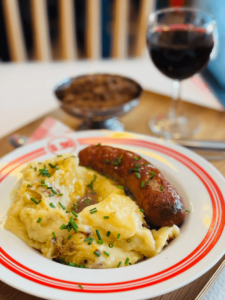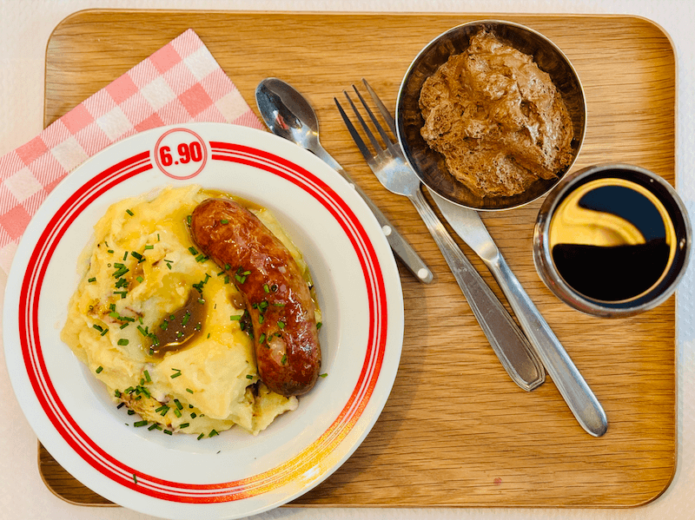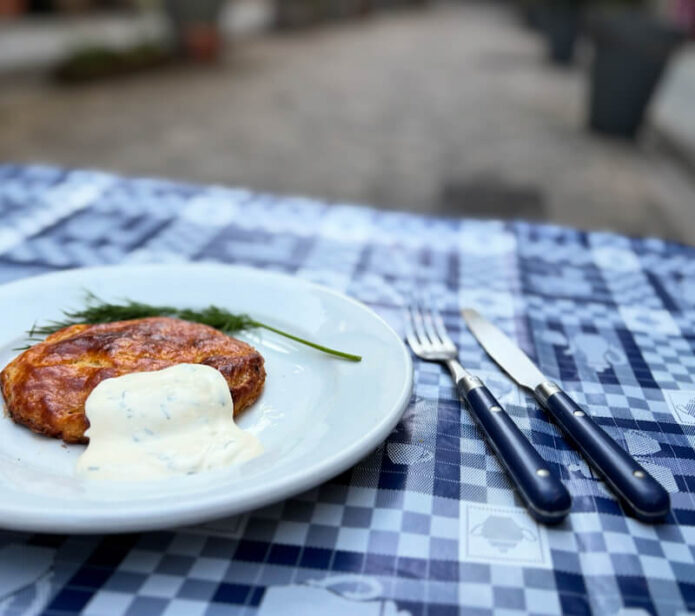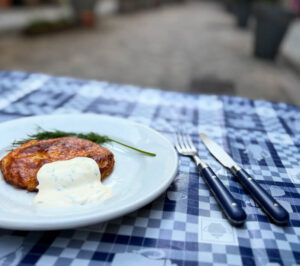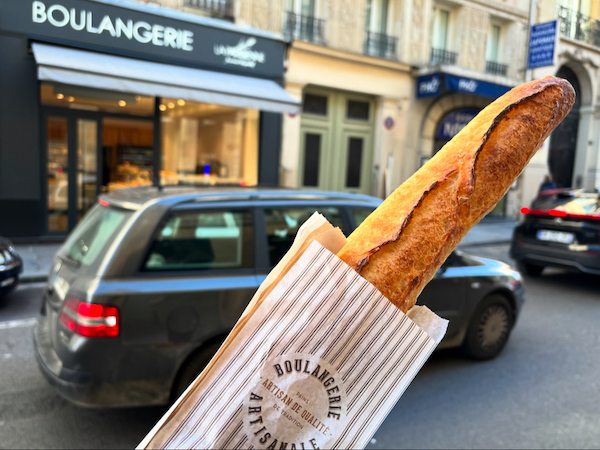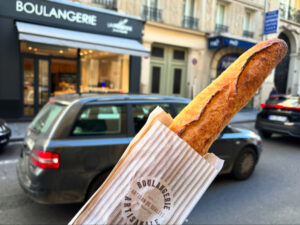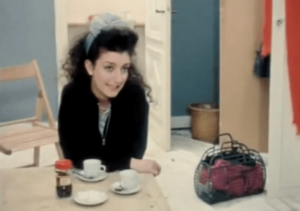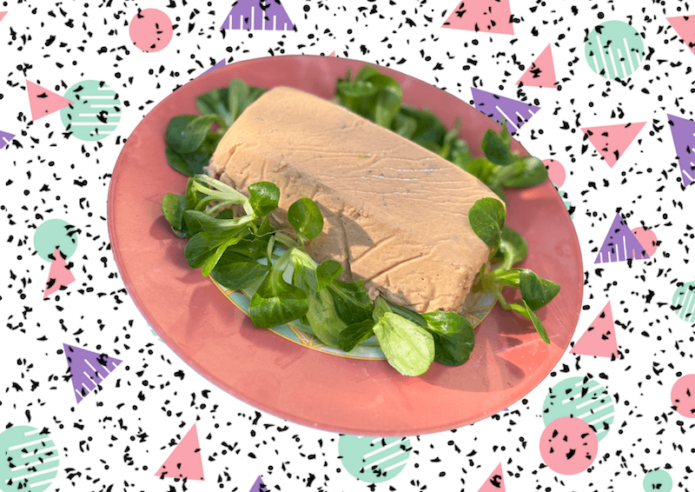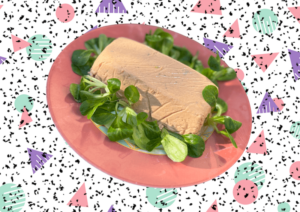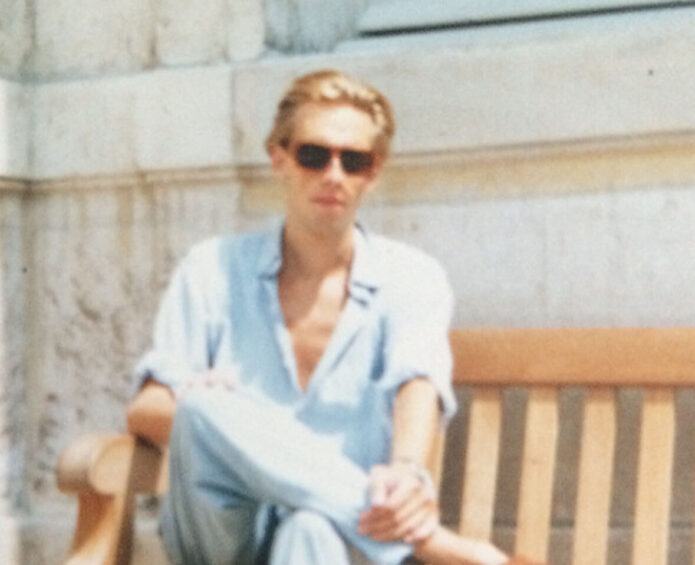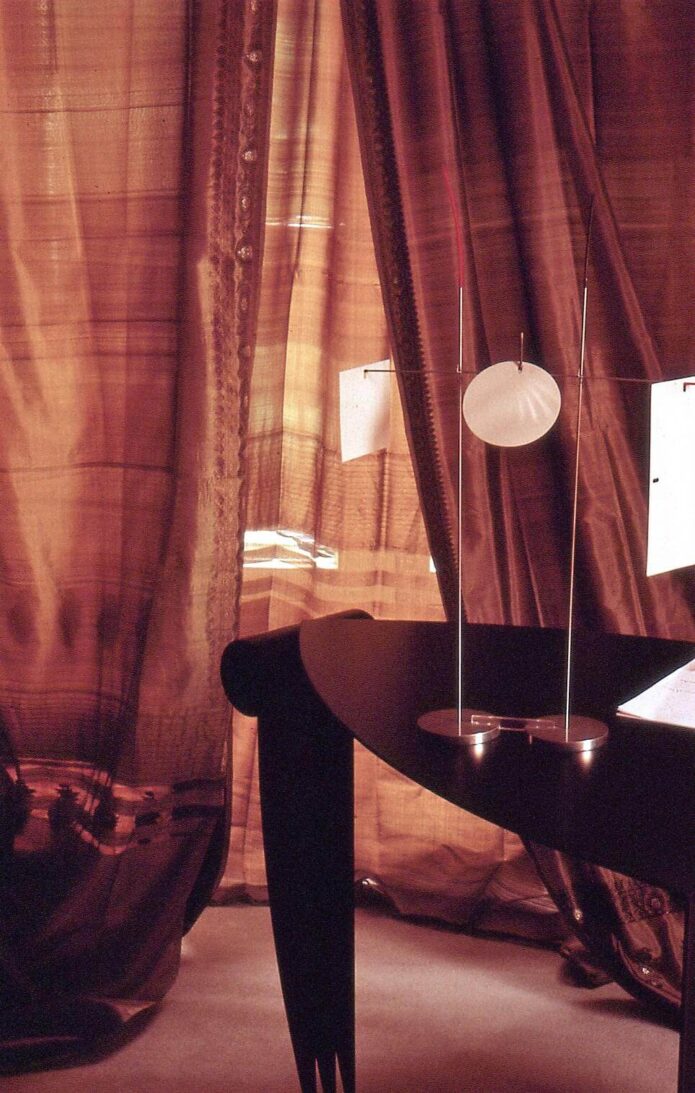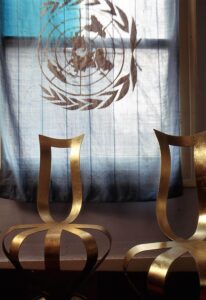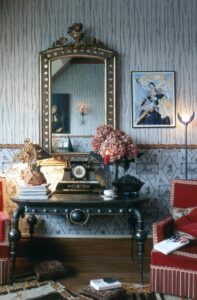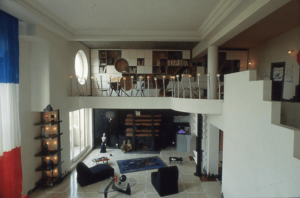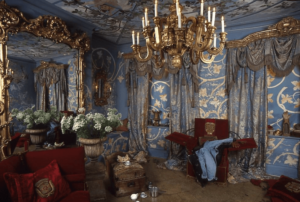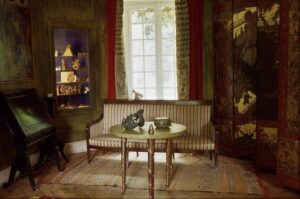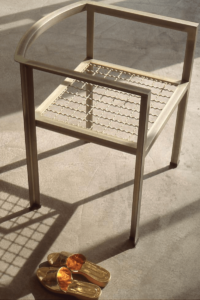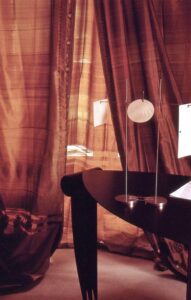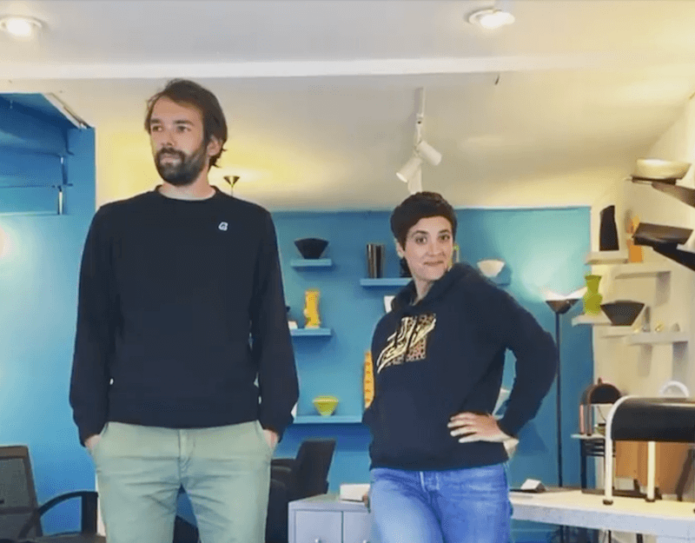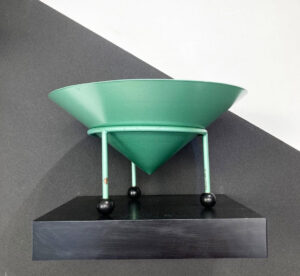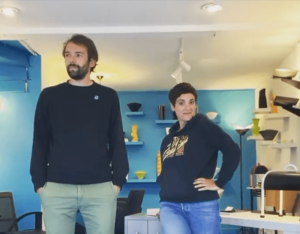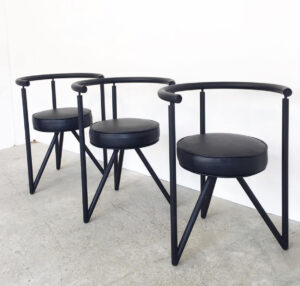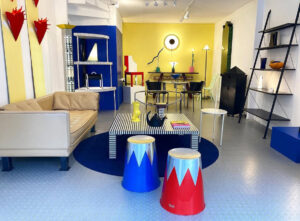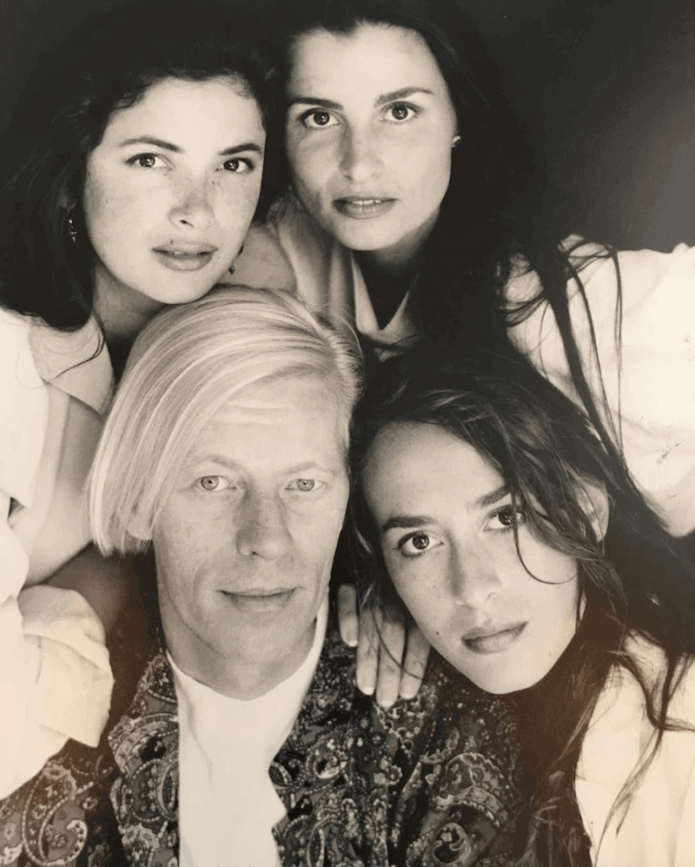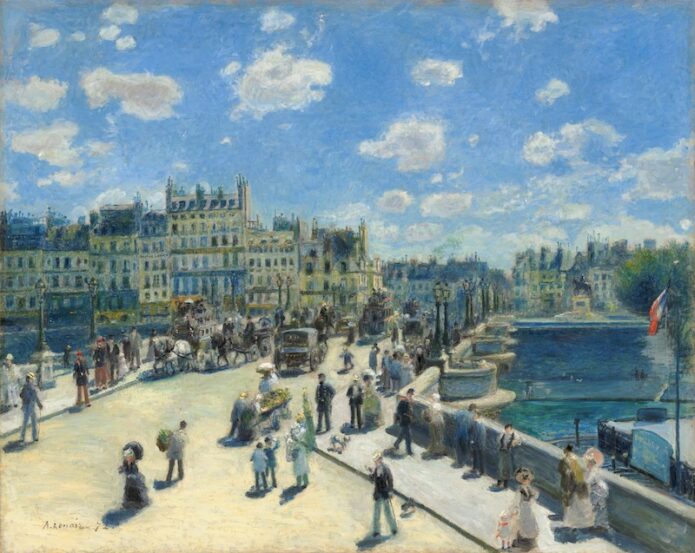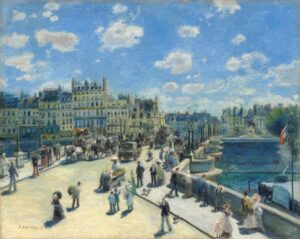In de jaren tachtig bood de Parijse modewereld een heel ander landschap dan nu. Als mode-redacteur voor het tijdschrift Avenue maakte Frans Ankoné het allemaal van dichtbij mee. ‘De tijdschriften verkochten goed, er was een flink budget voor modereportages en alles was mogelijk,’ vertelt hij over die periode. Bovendien draaide de modewereld toen nog om de ontwerpers – ver verwijderd van de strak geregisseerde industrie zoals we die nu kennen.
Go to the English version of this article.
Wie is Frans Ankoné
Voor wie Frans Ankoné (1947) niet kent: hij ademt mode, al volgt hij het nu alleen nog als geïnteresseerde. Hij begon zijn carrière als stylist bij Peek & Cloppenburg, richtte in de jaren zeventig met collega’s de hippe winkelketen Mac & Maggie op en groeide uit tot toonaangevend moderedacteur bij Avenue. Later werkte hij onder andere voor The New York Times Magazine, het Italiaanse modehuis Romeo Gigli en Amsterdam Fashion Institute (AMFI).
Nu doet hij het rustiger aan. ‘Ik adviseer nog een paar studenten, schrijf soms voor het mode- en beautymagazine Mirror Mirror en doe af en toe een stylingopdracht. Ik ben op een leeftijd waarop ik denk: jonge mensen moeten ook een kans krijgen.’
Intieme producties
‘De manier waarop we in de jaren 80 modereportages voor Avenue maakten, is onvergelijkbaar met nu. We gingen vaak met drie mensen op pad: een model, een fotograaf en ik als stylist. Soms kwam er een kapper mee. Die kleinschaligheid gaf ons veel bewegingsvrijheid.’
Een week op pad
‘Als ik zin had om naar Timboektoe te gaan, dan kon dat gewoon. Nu werk je al snel met tien mensen op een shoot. Bij grote producties loopt dat op tot 35, inclusief assistenten voor de kapper, de fotograaf en nog veel meer.’ Ook was de tijdsdruk anders dan nu. ‘Wij gingen een week op pad voor één of twee producties, nu moet alles in één dag.’
Drijvende ijsschotsen
De foto’s uit die tijd ogen nog altijd spectaculair: van shoots op drijvende ijsschotsen in Groenland tot reportages op de Chinese Muur – locaties waar nog nooit eerder mode was vastgelegd. ‘Zo fotografeerden we ook boven op de Chrysler Building in New York. Dat zou tegenwoordig onmogelijk zijn vanwege alle veiligheidsvoorschriften.’
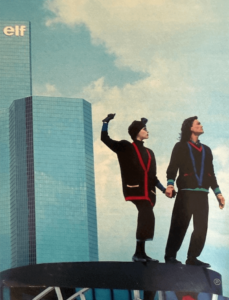
Beeld: Kleding van Mac & Maggie. Foto: © Maarten Schets
In de auto verkleden
‘Modeshows in Parijs waren ongelooflijk spannend. Je kon nog nieuwe namen ontdekken, zoals Gaultier. Mensen die naar Mugler gingen, droegen Mugler en verkleedden zich in de auto voor de show van Montana die volgde.’ Het was een hechte, kleine gemeenschap van modeprofessionals die elkaar kenden. ‘Nu trekken shows zoveel bezoekers dat het een gestroomlijnde machine moet zijn.’
Creativiteit boven commercie
In vergelijking met de jaren 70 werd de modewereld groter en internationaler, zonder commercieel te worden. ‘De drijvende kracht was de creativiteit van ontwerpers. Tegenwoordig bepalen grote bedrijven de koers.’ Die verandering zie je terug in de huidige snelle wisselingen van ontwerpers. ‘Als ze na twee jaar niet genoeg verkopen, worden ze vervangen, zoals nu bij Gucci. Dat bestond toen niet – je kreeg de tijd om te groeien.’ Natuurlijk heeft elke tijd zijn eigen charme, zegt Frans, die niet negatief wil overkomen. ‘Maar de vrijheid in de jaren 80 was bijzonder. Niet marketing of verkoopcijfers bepaalden de mode, maar creativiteit en design.’
Erkenning als stylist
De functie van moderedacteur onderging in die periode een transformatie. ‘Het werd in de jaren 80 echt een vak. Vroeger was je naamloos, iemand die in de redactie zat en ook nog wat met mode deed. Behalve moderedacteuren kregen ook stylisten een naam en werden voortaan bij modeproducties vermeld. Ze werden serieus genomen.’ Een groot verschil met nu: ‘Toen telde Nederland misschien vijf stylisten, nu zijn er ontelbaar veel. Iedereen is stylist, iedereen is influencer.’
Lijstje van adverteerders
‘Als stylist had je in de jaren 80 veel vrijheid in de keuze van kleding voor een shoot. Dat veranderde in de jaren 90, toen we lijstjes kregen van adverteerders wiens kleding we moesten gebruiken. Daar was ook niks verkeerd aan, de adverteerders hielpen het blad mogelijk te maken.’

Beeld: Model Apollonia van Ravenstein in Dior Haute Couture, styling Frans Ankoné, haar en make-up Charles Olivier. Foto: © Bart van Leeuwen
Reportage over de liefde
Terug naar Parijs. ‘Ik heb ooit een productie gemaakt over alle plekken die ik had bezocht toen ik verliefd was en waar ik had gezoend. Met modellen die op dezelfde plekken elkaar zoenden. Het was heel persoonlijk – als ik daar nu langskom, denk ik er nog aan. Niemand wist het verhaal erachter’ (lacht).
Politie om de tuin leiden
Frans’ favoriete plek is het Palais Royal, een imposant appartementencomplex met elegante zuilengalerijen rondom een tuin. Daar wist hij ooit zonder vergunning een fotoshoot te regelen door de politie slim om de tuin te leiden. ‘Ik zei dat de vergunning in de auto lag. De fotograaf bleef fotograferen terwijl ik zogenaamd de vergunning ging halen. Daarna liepen fotograaf en model weg – om te kijken waar ik bleef.’
Modewalhalla
De zuilengalerijen en de tuin van het Palais Royal spreken tot de verbeelding. In de jaren tachtig opende Didier Ludot hier zijn vintage-haute-couturewinkel. Na veertig jaar, in 2025, sloot de zaak definitief. In de jaren negentig vestigde parfumeur Serge Lutens er zijn eerste winkel en is er nog altijd gevestigd. Ook Marc Jacobs had er een winkel, terwijl Rick Owens er nog steeds zijn zaak heeft.
Een winkel vol giletjes
Het bracht Frans op het idee om zijn toenmalige werkgever Romeo Gigli voor te stellen er een winkel te beginnen – er was nog geen vestiging in Parijs. Maar die vond de ruimte te klein. ‘Het was helemaal niet duur. Toen dacht ik: dan doe ik het zelf. Een winkeltje met alleen maar herengiletjes, mijn geliefde kledingstuk. Het is er nooit van gekomen. Maar het was een mooie droom. Ik zag mezelf al in de zomer voor de deur zitten, met een sigaret in de hand.’
© Tekst: Monsieur Plusfours 2025; foto boven: Frans Ankoné met modellen Linda Spierings, Apollonia van Ravenstein en Cynthia Antonio. Foto: © Maarten Schets
MELD JE AAN VOOR ONZE GRATIS NIEUWSBRIEF!
Door je in te schrijven ga je akkoord met ons privacybeleid en ontvang je automatisch onze nieuwsbrief, net zolang totdat je je weer afmeldt.

Frans Ankoné during Christian Lacroix’s fashion show
Stylist Frans Ankoné looks back on fashion’s golden years in Paris
In the 1980s, the Parisian fashion world was vastly different from today. As a fashion editor for Avenue magazine, Frans Ankoné experienced it all firsthand. ‘The magazines sold well, there was a substantial budget for fashion shoots, and everything was possible,’ he recalls about that period. Moreover, fashion was still driven by designers – far removed from today’s tightly orchestrated industry.
Who is Frans Ankoné
For those who don’t know Frans Ankoné: he lives and breathes fashion, though nowadays only as an interested observer. He began his career as a stylist at Peek & Cloppenburg, co-founded the trendy retail chain Mac & Maggie in the seventies, and grew to become a leading fashion editor at Avenue. He later worked for The New York Times Magazine, Italian fashion house Romeo Gigli, and the Amsterdam Fashion Institute (AMFI).
Now he’s taking it easier. ‘I still advise a few students, occasionally write for Mirror Mirror fashion and beauty magazine, and do some styling work now and then. I’m at an age where I think: young people should get their chance too.’
Intimate Productions
‘The way we created fashion shoots for Avenue in the 1980s is incomparable to now. We often went out with just three people: a model, a photographer, and myself as stylist. Sometimes a hairdresser would join. This small scale gave us tremendous freedom.’
A Week on Location
‘If I wanted to go to Timbuktu, we could just do it. Now you easily work with ten people on a shoot. For large productions, that can increase to 35, including assistants for the hairdresser, photographer, and many more.’ The time pressure was different too. ‘We would go away for a week to do one or two productions; now everything must be done in a day.’
Floating Ice Floes
The photos from that era remain spectacular: from shoots on floating ice floes in Greenland to shoots on the Great Wall of China – locations where fashion had never been photographed before. ‘We even photographed atop the Chrysler Building in New York. That would be impossible today due to safety regulations.’
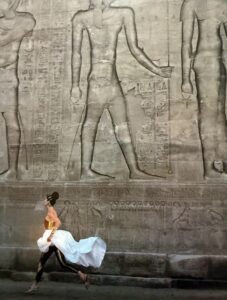
Image: Model Carol Wilson in Egypte, styling Frans Ankoné, hair and make-up John Kattenberg. Photo: © Maarten Schets
Changing in Cars
‘Fashion shows in Paris were incredibly exciting. You could still discover new names, like Gaultier. People who went to Mugler wore Mugler and changed in their cars for Montana’s show afterward.’ It was a tight-knit, small community of fashion professionals who knew each other. ‘Now shows attract so many visitors that it has to be a streamlined machine.’
Creativity Over Commerce
Compared to the 1970s, the fashion world grew larger and more international, without becoming commercial. ‘The driving force was designers’ creativity. Today, large corporations determine the course.’ This change is reflected in today’s rapid turnover of designers. ‘If they don’t sell enough after two years, they’re replaced, as with Gucci now. That didn’t exist then – you were given time to grow.’ Every era has its charm, says Frans, not wanting to sound negative. ‘But the freedom in the 1980s was special. Not marketing or sales figures determined fashion, but creativity and design.’
Recognition as a Stylist
The role of fashion editor underwent a transformation during this period. ‘It became a real profession in the 1980s. Previously, you were nameless, someone who worked in editorial and also did something with fashion. Both fashion editors and stylists gained recognition and were credited in fashion productions. They were taken seriously.’ A big difference from now: ‘Then the Netherlands had maybe five stylists, now there are countless. Everyone’s a stylist, everyone’s an influencer.’
Advertisers’ Lists
‘As a stylist in the 1980s, you had lots of freedom in choosing clothes for a shoot. That changed in the 1990s when we received lists of advertisers whose clothes we had to use. There was nothing wrong with that – the advertisers helped make the magazine possible.’

Image: Model Apollonia van Ravenstein in Madame Gres haute couture, styling Frans Ankoné, hair and make-up Charles Olivier. Photo: © Bart van Leeuwen
A Love Story Shoot
Back to Paris. ‘I once did a production about all the places I had visited when I was in love and where I had kissed. With models kissing in the same locations. It was very personal – when I pass by now, I still think about it. Nobody knew the story behind it’ (laughs).
Outsmarting the Police
Frans’ favorite spot is the Palais Royal, an impressive apartment complex with elegant colonnades around a garden. Once, he managed to arrange a photo shoot without a permit by cleverly outsmarting the police. ‘I said the permit was in the car. The photographer kept shooting while I pretended to get the permit. Then photographer and model left – supposedly to see where I was. In 2025, something like that would be unthinkable.’
Fashion Mecca
The colonnades and garden of the Palais Royal capture the imagination. In the 1980s, Didier Ludot opened his vintage haute couture store here. After forty years, in 2025, the store closed permanently. In the 1990s, perfumer Serge Lutens established his first store and is still there. Marc Jacobs also had a store here, while Rick Owens still maintains his shop.
A Shop Full of Waistcoats
This inspired Frans to suggest his then-employer Romeo Gigli open a store there – there wasn’t yet one in Paris. But he found the space too small. ‘It wasn’t expensive at all. Then I thought: I’ll do it myself. A little shop with just men’s waistcoats, my favorite garment. It never happened. But it was a beautiful dream. I could see myself sitting outside in summer, cigarette in hand.’
© Text: Monsieur Plusfours 2025
SIGN UP FOR OUR FREE DUTCH-ENGLISH NEWSLETTER!
You will automatically receive our newsletter until you unsubscribe.
